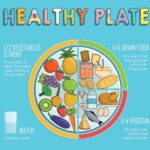In the realm of parenting, one decision that often perplexes new parents is the choice between Disposable and Cloth Diapers for their little ones. Both options come with their own set of advantages and considerations. Let’s dive into the nuances of each, helping you make an informed decision for your baby.
The Cost Factor: A Long-Term Perspective
Disposable Diapers: While disposable diapers offer convenience, they come with a significant long-term cost. Over the span of two, three, or even five years, the cumulative expenses can become substantial. The ease of use comes at a price, making it essential to factor in the budget implications over an extended period.
Cloth Diapers: On the other hand, cloth diapers emerge as a cost-effective alternative, especially when considering the entire duration of your child’s diapering phase. Though the initial investment might seem higher, the savings become evident as you reuse cloth diapers over time.
Quantity Calculations: Finding the Right Balance
Disposable Diapers: The quantity of disposable diapers needed depends on your child’s daily requirements. Since disposables are discarded after single use, estimating the number involves multiplying changes per day by the total days in a week.
Cloth Diapers: For cloth diapers, the calculation considers both washing frequency and the number of changes per day. Having a stockpile of five to ten diapers ensures you are well-equipped, and laundry intervals align with your preferences.
Additional Supplies: Beyond the Basics
Disposable Diapers: With disposables, the need for additional supplies is minimal. However, having a dedicated diaper-changing station with wipes, rash creams, and a disposal system is advisable for a seamless experience.
Cloth Diapers: Cloth diapers require covers and pins, which can be obtained alongside the diapers. Some parents opt for plastic pants or specialized wraps available online. A diaper container or a dedicated washing routine is necessary to manage used cloth diapers effectively.
Diaper Containers: Dry vs. Wet Method
Dry Container: A dry container involves placing dirty diapers in an empty receptacle, often emptied into the toilet before disposal. Baking soda can be used to mitigate odors.
Wet Container: A wet container incorporates a vinegar and water solution to neutralize ammonia odors. Finding the right mixture that suits your preferences is essential.
Cleansing Cloth Diapers: Tips for Optimal Hygiene
Detergent Selection: Opt for a mild detergent suitable for your baby’s sensitive skin. Avoid liquid cloth softeners, as they can interfere with the fabric’s absorbency.
Washing Technique: Cleanse cloth diapers using hot water and rinse with cold water. Sun-drying is effective for removing stubborn stains, while machine drying is also an option without fabric softener dryer sheets.
Final Thoughts: Balancing Convenience and Sustainability
As you embark on the journey of parenthood, the choice between disposable and cloth diapers involves weighing convenience against sustainability. Disposable diapers offer ease but accumulate costs, while cloth diapers present an eco-friendly and cost-effective solution with a bit more effort in terms of maintenance.
Choosing between the two depends on your lifestyle, budget considerations, and environmental consciousness. Whichever path you choose, you’re contributing to maintaining a hygienic and safe environment for your little one.
Read also: Fun and Educational: 10 Indoor Games to Keep Your Kids Busy





